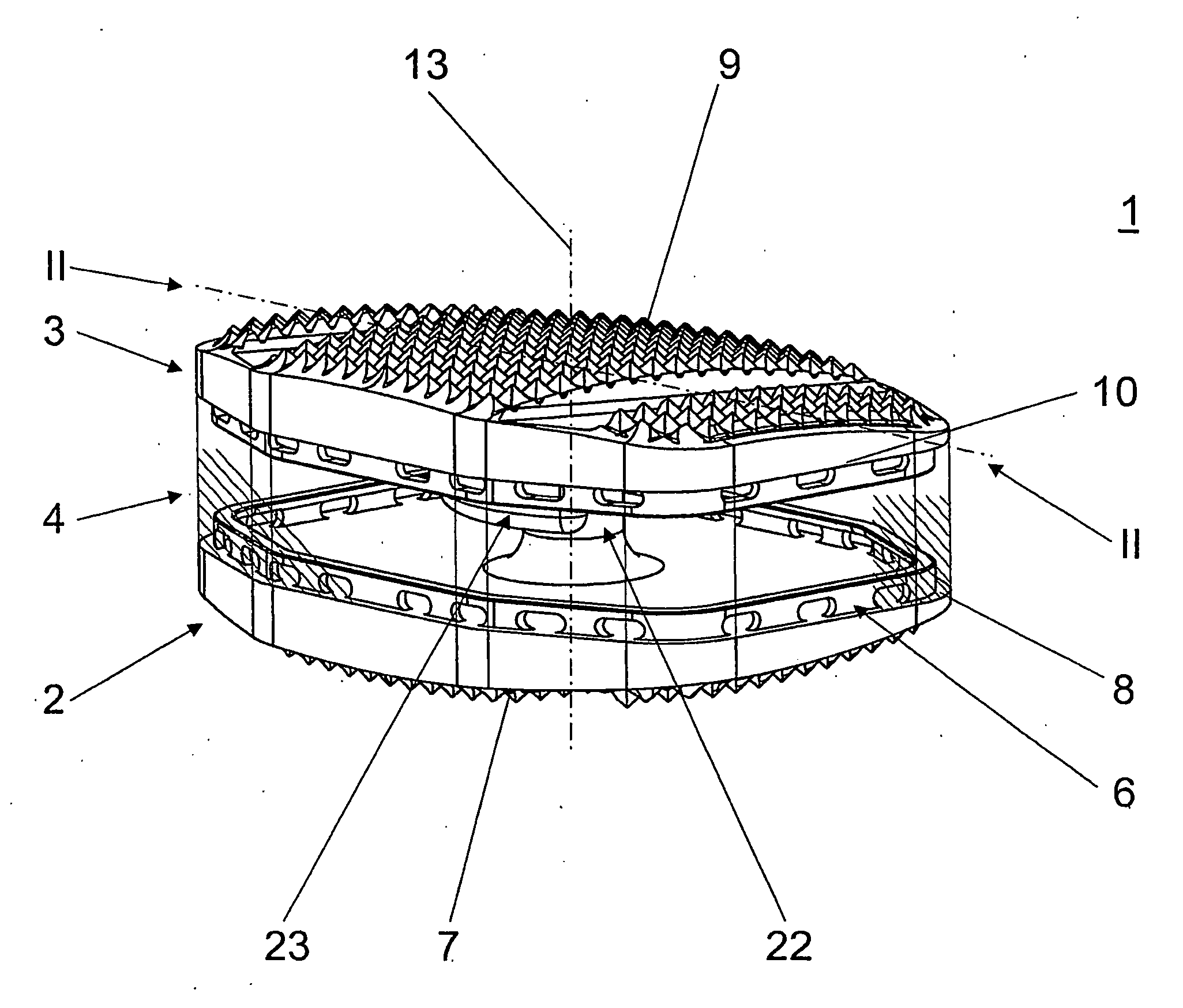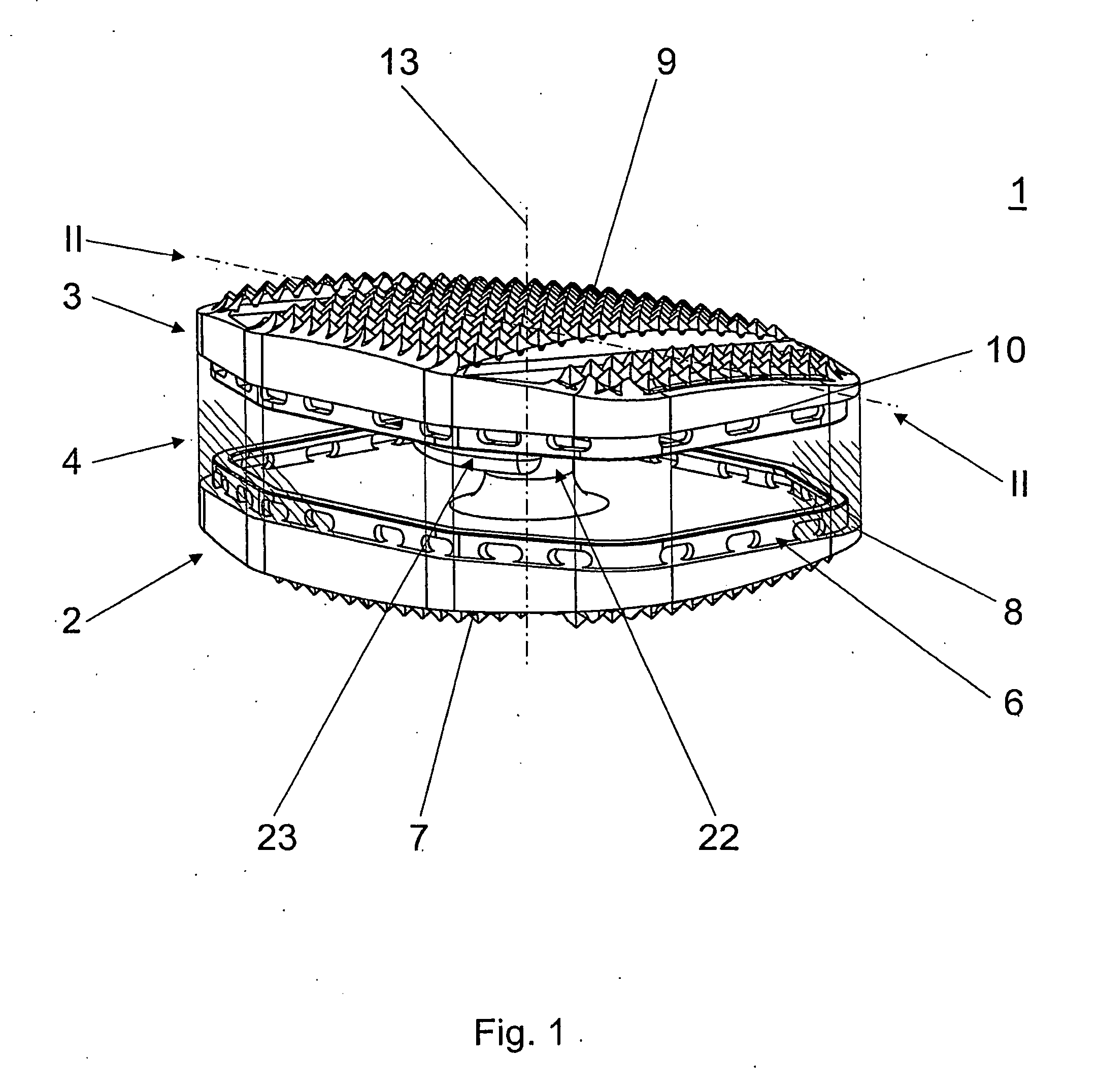Total disc replacement device
a total disc and disc technology, applied in the field of total disc replacement devices, can solve the problems of limited motion of the shell relative to one another, complex natural motion pattern of two adjoining vertebral bodies, and inability to allow rigid limitation of the lateral motion of the shell
- Summary
- Abstract
- Description
- Claims
- Application Information
AI Technical Summary
Benefits of technology
Problems solved by technology
Method used
Image
Examples
Embodiment Construction
[0076]In FIG. 1 an embodiment of a total disc replacement device 1 according to the invention is represented which comprises a first and a second plate-shaped apposition member 2;3 and an elastic spacer 4 disposed between the first and second apposition member 2;3. The first and second apposition members 2;3 and the elastic spacer 4 are being cut by a central axis 13 extending along the longitudinal axis of the vertebra. The first and second apposition members 2;3 each comprise an apposition surface 7;9 and an intermediate 8;10 whereby said apposition surfaces 7;9 are apt to abut the end plates of the adjoining vertebral bodies and whereby said intermediate surfaces 8;10 are arranged facing each other. Furthermore, the elastic spacer 4 comprises a first and a second surface which are essentially parallel and abut an intermediate surface 8; 10 of the apposition members 2;3 each. In order to limit the mutual translation of the apposition members 2;3 transverse to the central axis 13 t...
PUM
 Login to View More
Login to View More Abstract
Description
Claims
Application Information
 Login to View More
Login to View More - R&D
- Intellectual Property
- Life Sciences
- Materials
- Tech Scout
- Unparalleled Data Quality
- Higher Quality Content
- 60% Fewer Hallucinations
Browse by: Latest US Patents, China's latest patents, Technical Efficacy Thesaurus, Application Domain, Technology Topic, Popular Technical Reports.
© 2025 PatSnap. All rights reserved.Legal|Privacy policy|Modern Slavery Act Transparency Statement|Sitemap|About US| Contact US: help@patsnap.com



